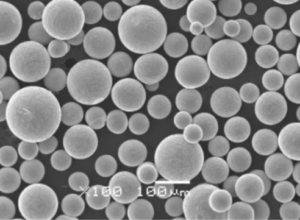Welcome to the ultimate guide on powder making equipment! Whether you’re an industry professional or a curious enthusiast, this guide is tailored to give you a comprehensive understanding of the various powder making equipment available, their applications, and much more. Let’s dive in and explore the fascinating world of powder manufacturing.
Overview of Powder Making Equipment
Powder making equipment is essential in various industries, including pharmaceuticals, metallurgy, food processing, and more. These machines transform raw materials into fine powders, which can then be used in a multitude of applications. In this guide, we’ll cover specific models, their properties, applications, and how to choose the right equipment for your needs.
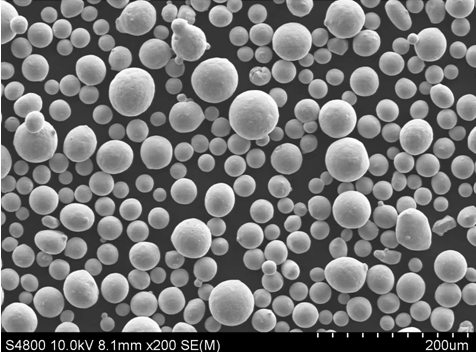
Types of Powder Making Equipment
1. Ball Mills
Ball mills use grinding media (typically steel or ceramic balls) to crush materials into fine powders. They are commonly used in mining, pharmaceuticals, and cement industries.
2. Jet Mills
Jet mills use high-speed jets of compressed air or steam to grind particles. Ideal for producing fine powders, they are used in pharmaceuticals, chemicals, and cosmetics.
3. Hammer Mills
Hammer mills crush materials using high-speed rotating hammers. They’re often used in the agricultural sector to grind grains into flour or in recycling to break down scrap materials.
4. Attrition Mills
Attrition mills use a combination of shear and impact forces to grind materials. They are widely used in the paint and ink industries.
5. Vibration Mills
Vibration mills use oscillatory motion to grind materials. They are suitable for producing extremely fine powders and are used in electronics and advanced ceramics.
6. Planetary Ball Mills
Planetary ball mills have multiple grinding jars rotating on a sun wheel. They are used for mechanical alloying and synthesizing new materials in research laboratories.
7. Disc Mills
Disc mills use friction to grind materials between two discs. They are commonly used in the food industry to produce cocoa powder or flour.
8. Roller Mills
Roller mills use cylindrical rollers to crush materials. They are prevalent in the agriculture sector for milling grains and seeds.
9. Pin Mills
Pin mills use two discs with interlocking pins to grind materials. They are suitable for producing fine powders in the food and pharmaceutical industries.
10. Fluidized Bed Opposed Jet Mills
These mills use a fluidized bed of particles and opposed jets to grind materials. They are used for ultrafine grinding in the chemical and mineral industries.
Table of Powder Making Equipment Types and Characteristics
| Equipment Type | Mechanism | Applications | Characteristics |
|---|---|---|---|
| Ball Mills | Grinding with balls | Mining, pharmaceuticals, cement | High efficiency, versatile |
| Jet Mills | Compressed air/steam | Pharmaceuticals, chemicals, cosmetics | Produces very fine powders |
| Hammer Mills | Rotating hammers | Agriculture, recycling | High capacity, coarse to medium grinding |
| Attrition Mills | Shear and impact | Paint, ink | Consistent particle size, high energy |
| Vibration Mills | Oscillatory motion | Electronics, ceramics | Produces ultrafine powders, energy-efficient |
| Planetary Ball Mills | Rotating jars | Research, material synthesis | High grinding efficiency, small batch sizes |
| Disc Mills | Friction between discs | Food industry | Suitable for powders, high precision |
| Roller Mills | Cylindrical rollers | Agriculture | Consistent grinding, low energy consumption |
| Pin Mills | Interlocking pins | Food, pharmaceuticals | Fine grinding, adjustable particle size |
| Fluidized Bed Opposed Jet Mills | Fluidized bed, jets | Chemical, mineral industries | Ultrafine grinding, high purity |
Applications of Powder Making Equipment
Powder making equipment finds its applications in a wide range of industries, from food processing to advanced materials research. Let’s explore some of these applications in detail.
| Industry | Application | Equipment Used |
|---|---|---|
| Pharmaceuticals | Drug formulation, active ingredients | Jet Mills, Pin Mills |
| Food Processing | Flour production, cocoa powder | Disc Mills, Roller Mills |
| Agriculture | Animal feed, grain milling | Hammer Mills, Roller Mills |
| Mining and Metallurgy | Ore processing, metal powders | Ball Mills, Fluidized Bed Jet Mills |
| Chemicals | Pigments, fine chemicals | Jet Mills, Attrition Mills |
| Electronics | Advanced ceramics, semiconductor powders | Vibration Mills, Planetary Ball Mills |
| Cosmetics | Fine powders for makeup | Jet Mills, Pin Mills |
| Paint and Ink | Pigments, fillers | Attrition Mills, Ball Mills |
| Recycling | Plastic grinding, metal recovery | Hammer Mills, Disc Mills |
| Research and Development | New material synthesis | Planetary Ball Mills, Jet Mills |



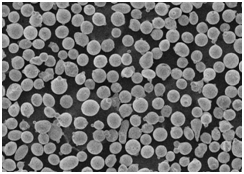
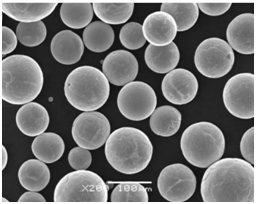
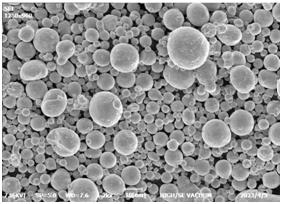
Specifications, Sizes, Grades, and Standards
When choosing powder making equipment, it’s crucial to consider specifications such as size, capacity, and the material it can process. Here’s a table with some general specifications.
| Equipment Type | Typical Sizes (LxWxH) | Capacity (kg/h) | Standards |
|---|---|---|---|
| Ball Mills | 1.2m x 1.5m x 1.2m | 100-5000 | ISO 9001, CE |
| Jet Mills | 1.0m x 1.0m x 1.5m | 50-2000 | cGMP, FDA |
| Hammer Mills | 1.5m x 1.2m x 2.0m | 200-10000 | ISO 9001, CE |
| Attrition Mills | 1.2m x 1.0m x 1.5m | 100-3000 | ISO 9001, CE |
| Vibration Mills | 1.0m x 0.8m x 1.2m | 50-1500 | ISO 9001, CE |
| Planetary Ball Mills | 0.6m x 0.8m x 1.2m | 1-100 | ISO 9001, CE |
| Disc Mills | 1.0m x 0.8m x 1.2m | 50-2000 | ISO 9001, CE |
| Roller Mills | 1.5m x 1.2m x 1.5m | 200-10000 | ISO 9001, CE |
| Pin Mills | 1.0m x 0.8m x 1.5m | 100-5000 | cGMP, FDA |
| Fluidized Bed Opposed Jet Mills | 1.5m x 1.2m x 1.5m | 50-2000 | ISO 9001, CE |
Suppliers and Pricing Details
Knowing where to source your equipment and understanding the cost implications is crucial. Here’s a look at some suppliers and their pricing.
| Supplier Name | Equipment Type | Price Range (USD) | Contact Information |
|---|---|---|---|
| ABC Milling Co. | Ball Mills, Hammer Mills | $10,000 – $50,000 | [email protected] |
| Jet Tech Inc. | Jet Mills, Fluidized Bed Mills | $20,000 – $100,000 | [email protected] |
| Grinding Solutions Ltd | Attrition Mills, Disc Mills | $15,000 – $75,000 | [email protected] |
| Vibration Mill Systems | Vibration Mills, Planetary Mills | $25,000 – $120,000 | [email protected] |
| Powder Process Equipment | Pin Mills, Roller Mills | $12,000 – $60,000 | [email protected] |
Pros and Cons of Different Powder Making Equipment
When comparing different types of powder making equipment, it’s essential to weigh their advantages and limitations. Here’s a detailed comparison.
| Equipment Type | Advantages | Limitations |
|---|---|---|
| Ball Mills | High efficiency, versatility | High energy consumption, large footprint |
| Jet Mills | Produces very fine powders, no contamination | High operational cost, requires compressed air |
| Hammer Mills | High capacity, simple operation | Coarse grinding, noisy operation |
| Attrition Mills | Consistent particle size, high energy | High maintenance, limited to specific materials |
| Vibration Mills | Energy-efficient, produces ultrafine powders | Limited capacity, higher initial cost |
| Planetary Ball Mills | High grinding efficiency, suitable for research | Limited to small batch sizes, complex setup |
| Disc Mills | Suitable for powders, high precision | Limited to specific materials, lower capacity |
| Roller Mills | Consistent grinding, low energy consumption | Limited to coarse grinding, large footprint |
| Pin Mills | Fine grinding, adjustable particle size | High maintenance, sensitive to feed variations |
| Fluidized Bed Opposed Jet Mills | Ultrafine grinding, high purity | High operational cost, complex setup |
Choosing the Right Powder Making Equipment
Selecting the right equipment depends on various factors, including the material you’re processing, the desired particle size, and your budget. Consider the following tips:
- Understand Your Material: Different materials require different grinding mechanisms. Metals may need ball mills, while pharmaceuticals may require jet mills.
- Desired Particle Size: For ultrafine powders, consider jet mills or vibration mills. For coarser materials, hammer or roller mills might be more appropriate.
- Capacity Requirements: Determine your production needs. High-capacity operations might benefit from hammer or roller mills, while research labs might prefer planetary ball mills.
- Budget Constraints: Balance the cost of equipment with your operational needs. While some mills are expensive, their efficiency and precision might justify the investment.
- Maintenance and Operation: Consider the ease of maintenance and operation. Some equipment may have higher operational costs but lower maintenance needs and vice versa.
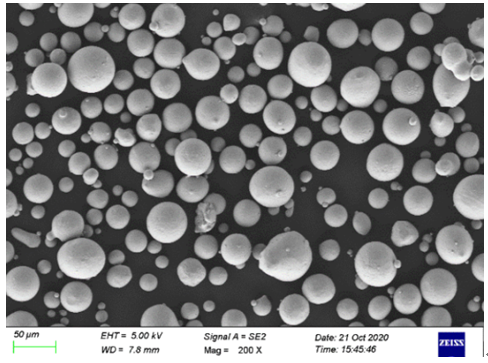
FAQs
| Question | Answer |
|---|---|
| What is the best equipment for fine powders? | Jet mills and vibration mills are ideal for producing fine powders due to their high precision and efficiency. |
| How do I choose the right mill for my material? | Consider the material’s properties, desired particle size, capacity needs, and budget constraints. |
| Are there any safety concerns with these machines? | Yes, proper safety protocols should be followed to prevent accidents. Ensure machines have safety features like guards and emergency stop buttons. |
| Can these machines handle multiple materials? | Some machines are versatile and can handle multiple materials, but it’s essential to check the manufacturer’s specifications. |
| What maintenance is required for these machines? | Regular maintenance includes cleaning, checking for wear and tear, lubricating moving parts, and replacing worn components. |
| How much does a typical powder making machine cost? | Prices vary widely based on the type and capacity, ranging from $10,000 to over $100,000. |
| Is it possible to rent powder making equipment? | Some suppliers offer rental options, which can be a cost-effective solution for short-term needs. |
| What are the environmental impacts of using these machines? | Depending on the machine, there can be emissions or waste. It’s crucial to use machines with environmental controls and follow proper waste management practices. |
| How do I ensure product consistency? | Regularly calibrate your equipment, maintain it properly, and ensure consistent feed material quality. |
| Can I use these machines for both wet and dry materials? | Some machines are designed for both wet and dry grinding, but it’s important to check the specifications to confirm. |
Conclusion
Powder making equipment is a vital component in many industries, enabling the transformation of raw materials into fine powders for various applications. Understanding the different types of equipment, their applications, specifications, and maintenance requirements will help you make an informed decision for your needs. Whether you’re in pharmaceuticals, food processing, or any other industry requiring fine powders, this guide provides the essential information to get you started.
We hope this comprehensive guide has been helpful. If you have any further questions or need specific recommendations, don’t hesitate to reach out to industry experts or suppliers. Happy milling!

